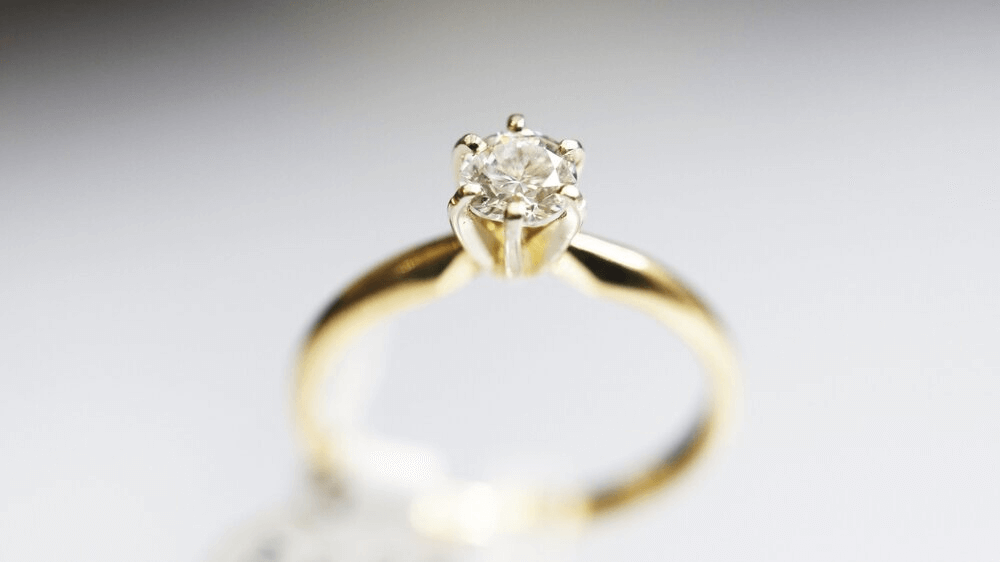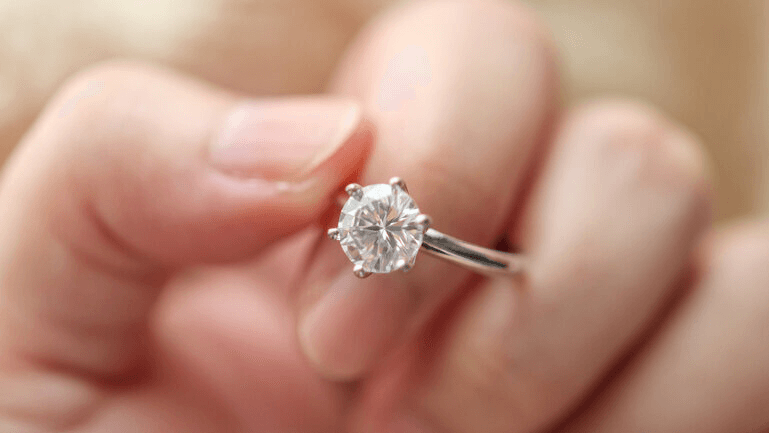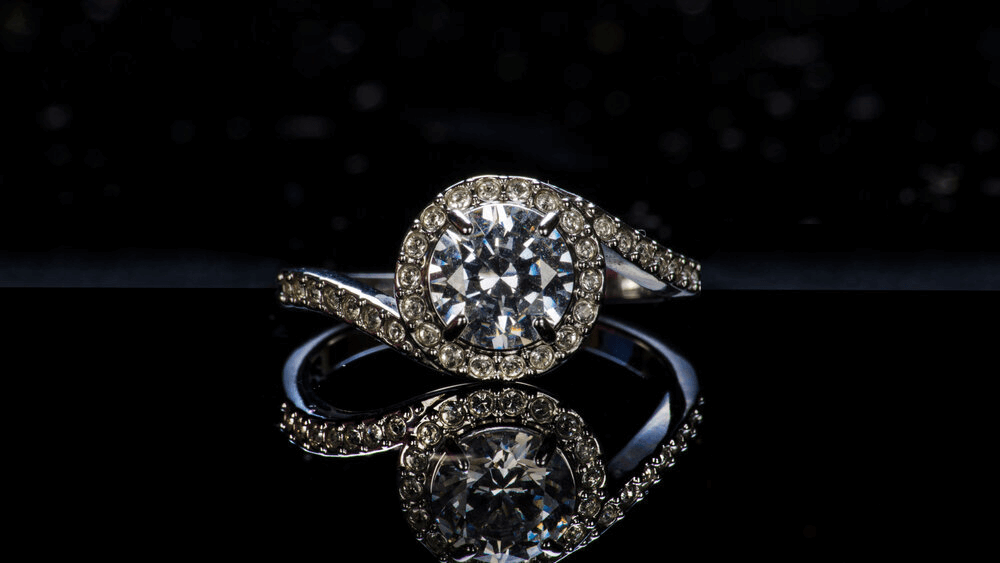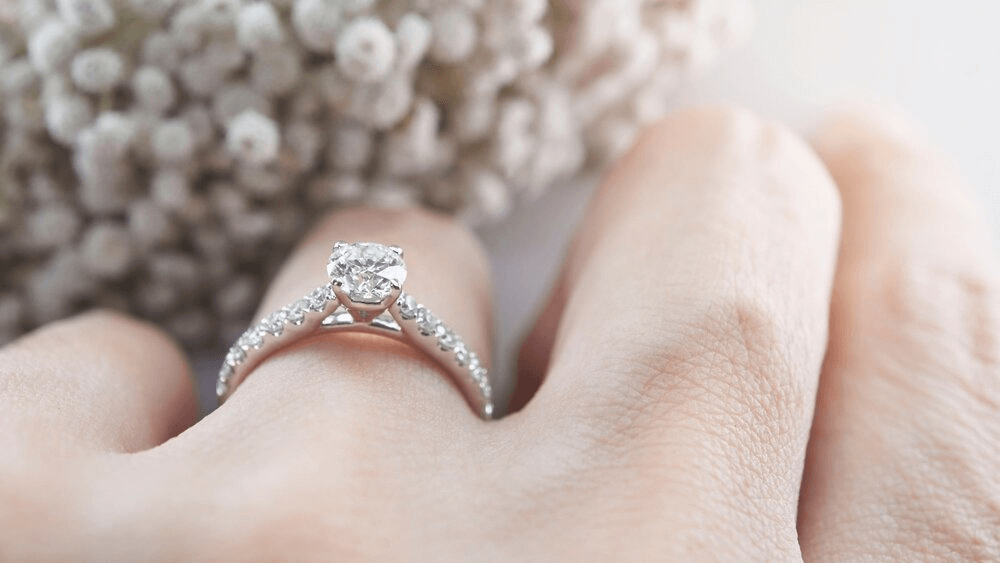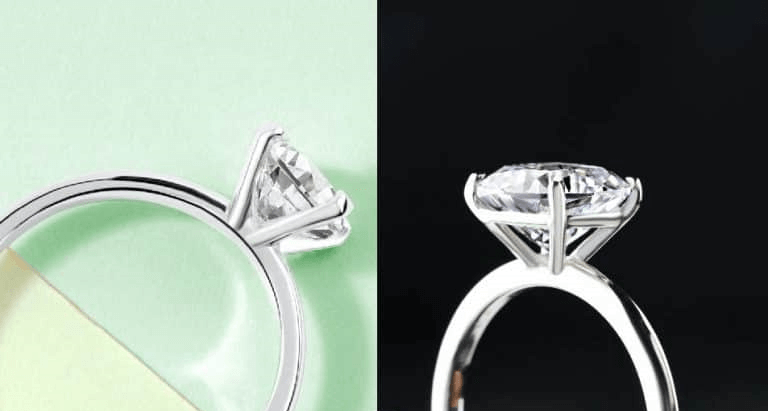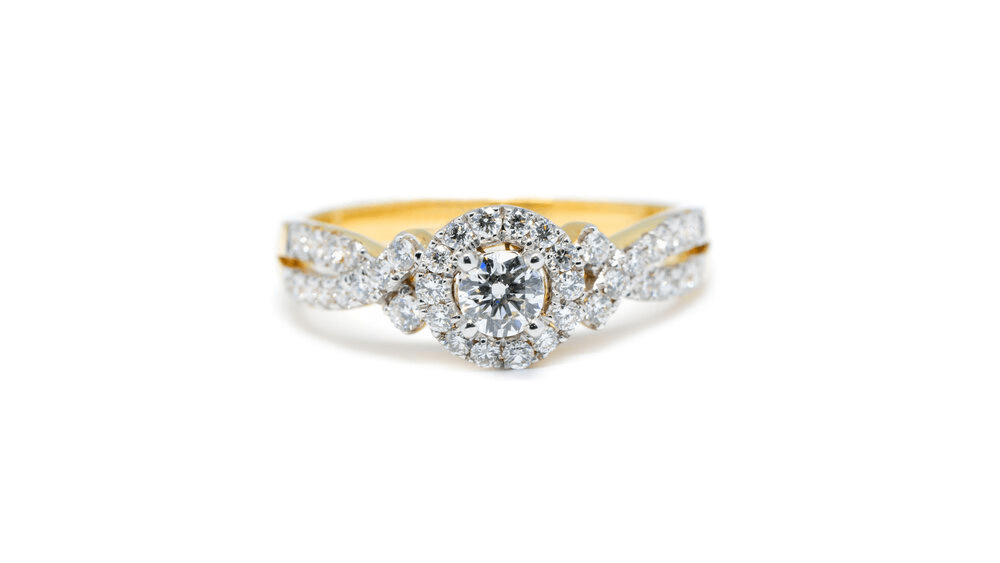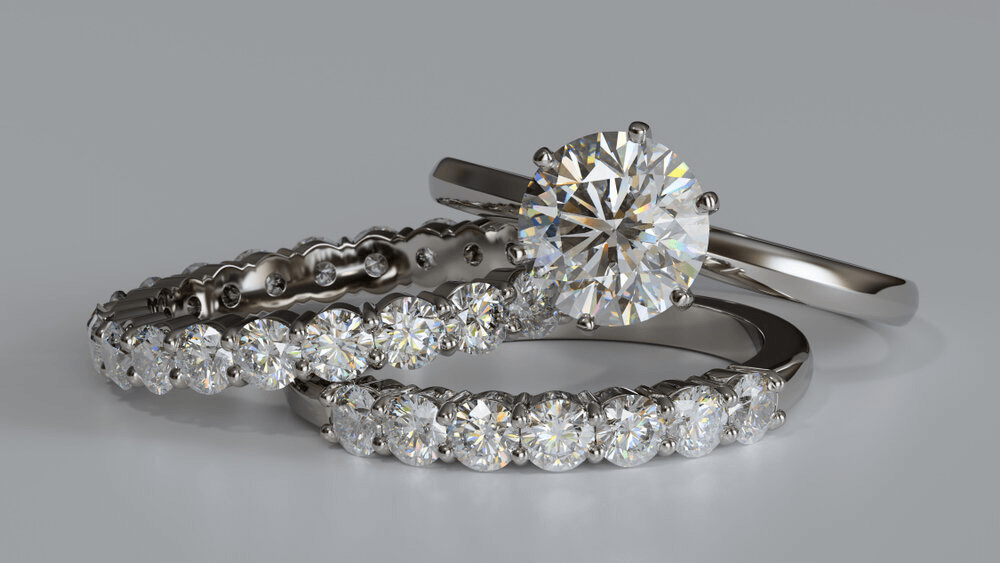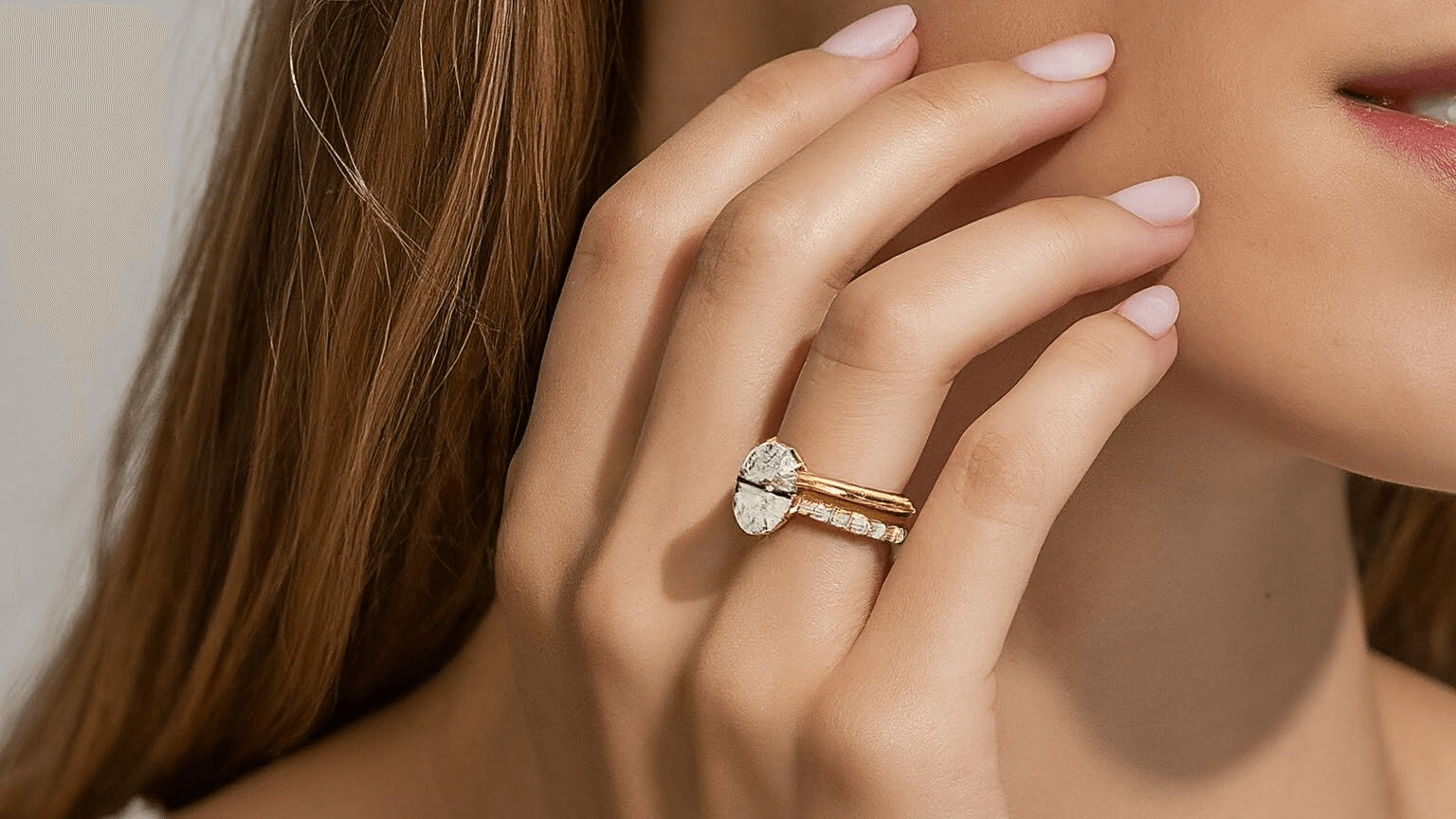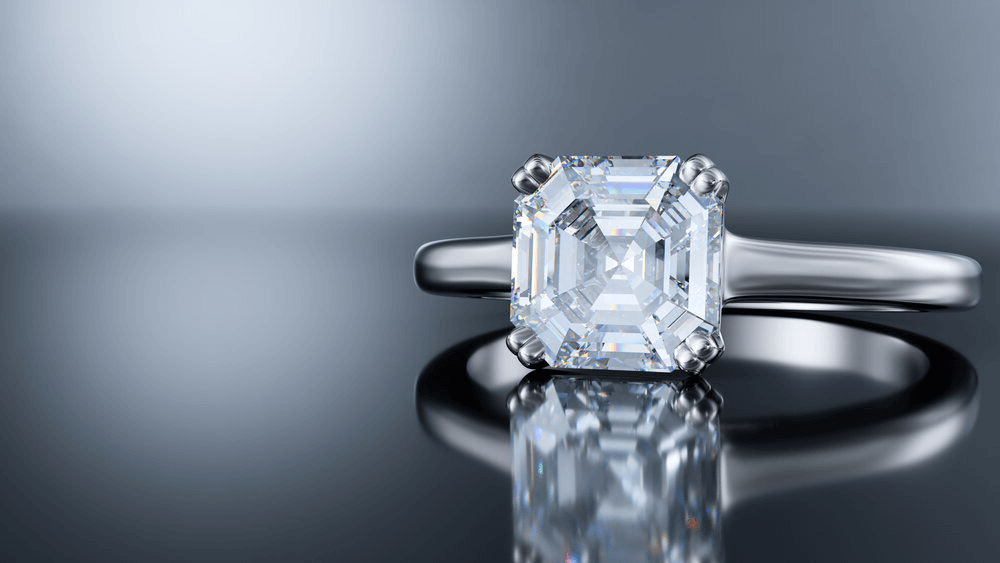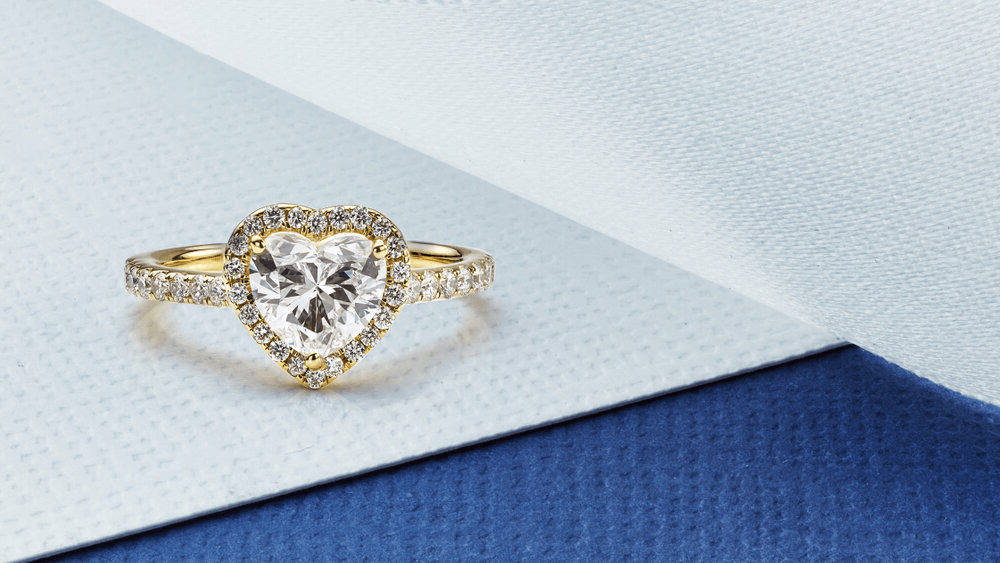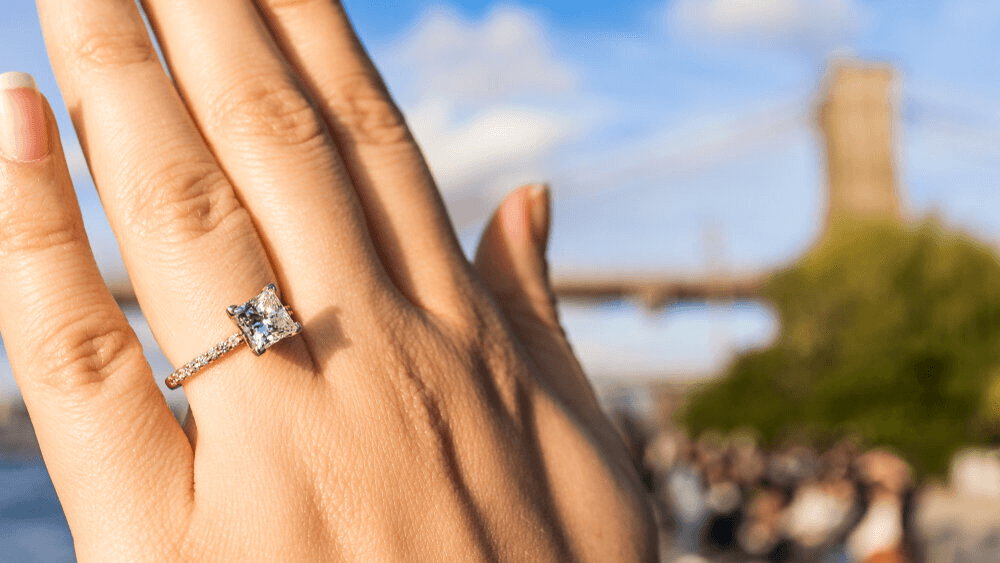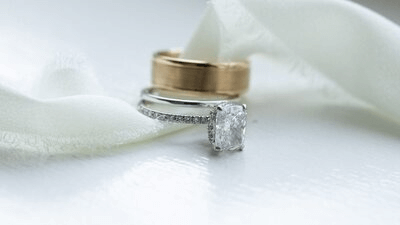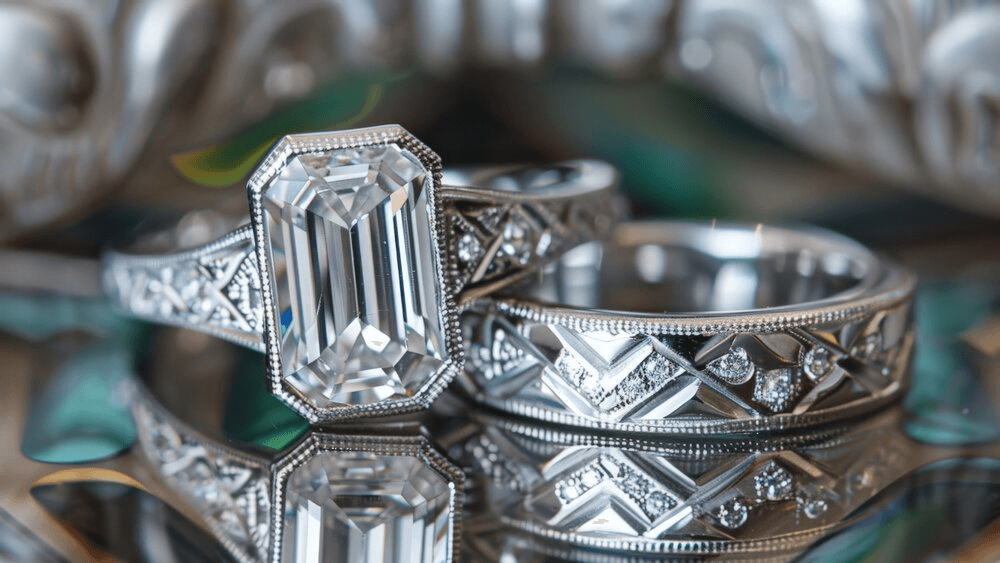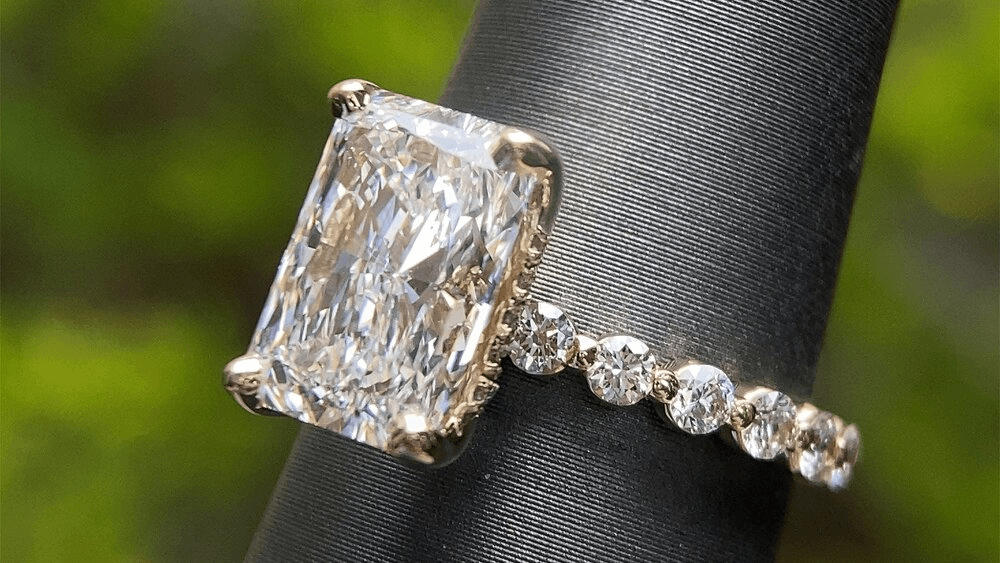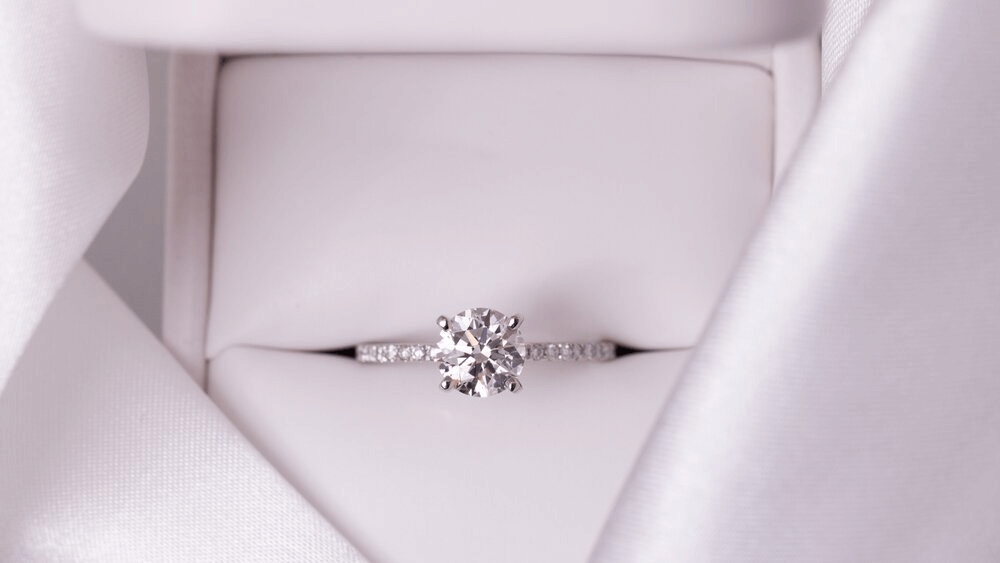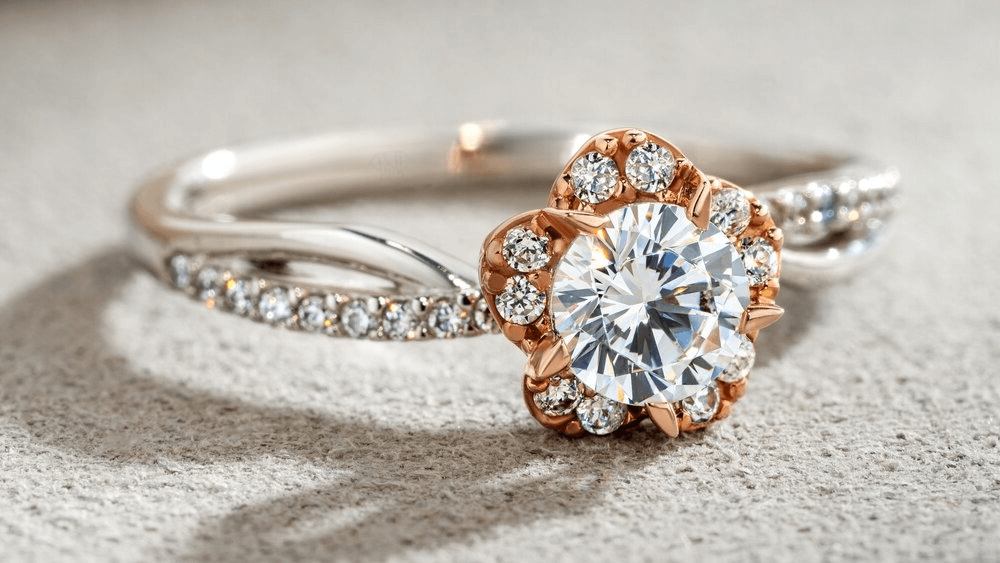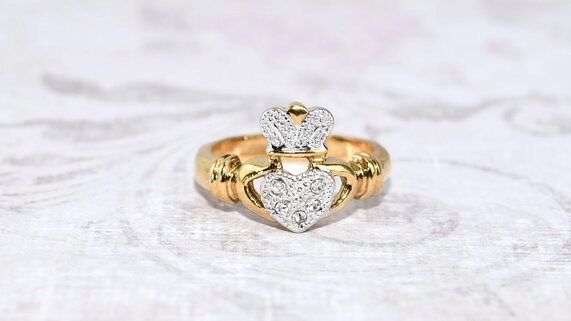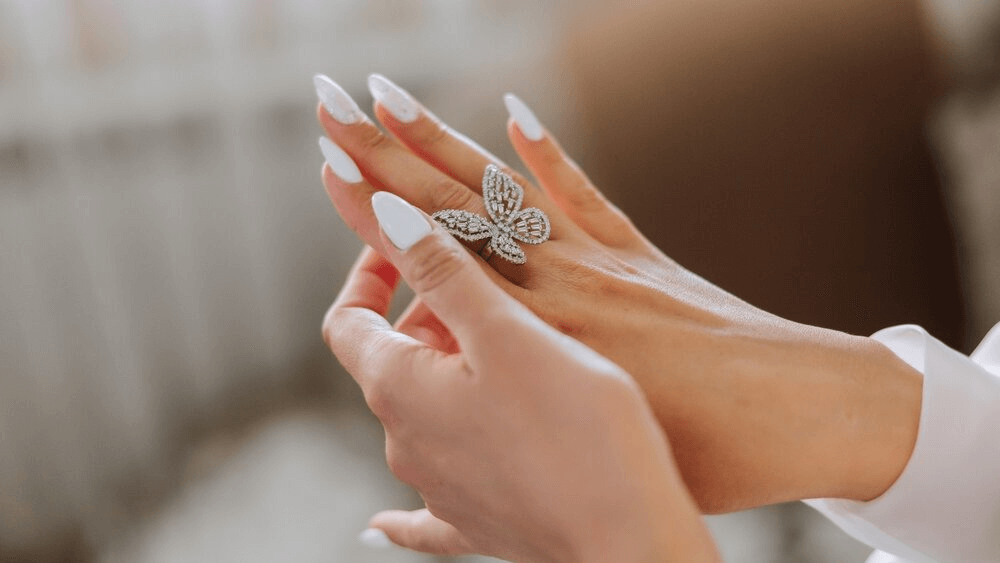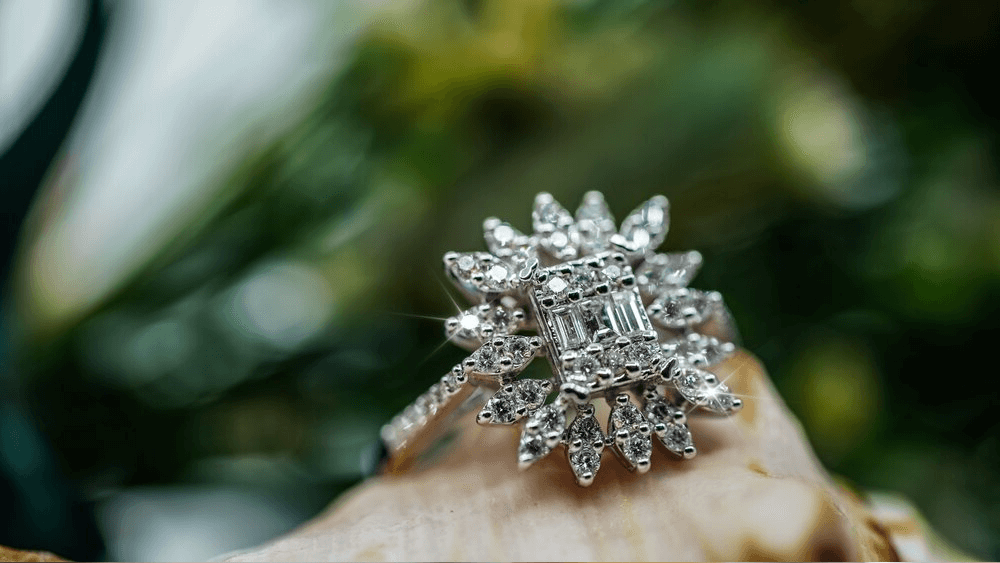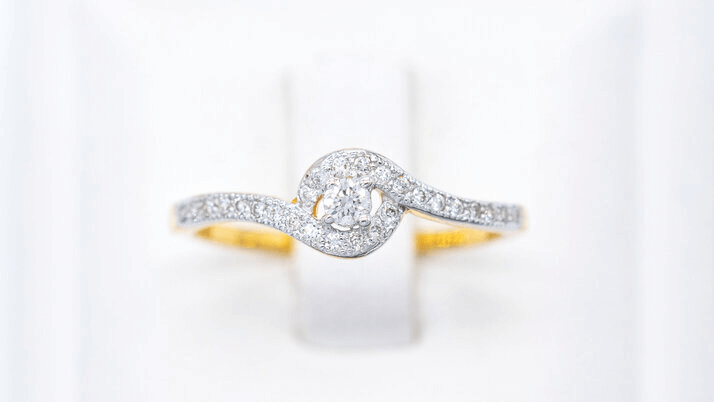Two-Tone Diamond Rings: The Ultimate Proposal Secret

By Gary A.

Edited by Olivia H.
Published Aug 8, 2024
Edited on Mar 31, 2025
Gone are the days when you felt like you had to ‘pick a side’ in the precious metal debate. These days, two-tone engagement rings are all the rage.

Navigate This Guide:
- 7 Quick Tips for Picking a Two-Tone Engagement Ring
- Introduction: The Timeless Elegance of Two-Tone Engagement Rings
- Design and Aesthetic Appeal of Two-Tone Rings
- Choosing Your Two-Tone Engagement Ring
- Our Expert Take: Embracing the Charm of Two-Tone Rings
- 7 Frequently Asked Questions about Two-Tone Engagement Rings
Before we dive deeper into the specifics, here are some practical tips to help guide your decision-making process:
7 Quick Tips for Picking a Two-Tone Engagement Ring
- Tip 1: Consider the 4 Cs Carefully
- Carat: Balance your desires and your budget to find a diamond size that fits both. In a two-tone setting, the right carat size can enhance the contrast and beauty of the metals.
- Cut: Prioritize a high-quality cut to ensure maximum brilliance. The cut should not only highlight the diamond’s sparkle but also complement the dual tones of the ring.
- Color: Aim for a diamond with minimal color, ideally graded H or higher. A nearly colorless diamond will look stunning against both metals in a two-tone setting.
- Clarity: Choose a diamond with clarity of SI1 or higher, where inclusions are not visible to the naked eye, ensuring a flawless appearance in your two-tone design
- Tip 2: Choose Complementary Metals
- When selecting your two-tone engagement ring, pick metals that not only look good together but also share similar durability. A classic combination like white gold and yellow gold offers both a striking visual contrast and a harmonious blend.
- Tip 3: Examine the Setting Thoroughly
- Inspect how the two metals integrate. The transition between metals should be fluid, without visible soldering marks. Ensure the diamond is securely mounted, reflecting the craftsmanship of the ring.
- Tip 4: Understand Maintenance Requirements
- Different metals require different care. Know that white gold may need periodic rhodium replating to maintain its shine, whereas platinum, though more durable, comes with a higher price tag.
- Tip 5: Check for Proportion and Balance
- The diamond should harmonize with the two-tone setting, neither overshadowing the metals nor being lost in their interplay. The design should achieve a balanced and cohesive look that suits the diamond and both metals.
- Tip 6: Align with Personal Style and Lifestyle
- Reflect on the daily activities and fashion sense of the wearer. The ring’s design should not only match their personal style but also be practical enough to withstand everyday wear and tear.
- Tip 7: Insist on Certification and Warranty
- Demand a diamond grading report from a recognized gemological laboratory and understand the ring’s warranty and return policies. This documentation is crucial for validating the quality of your purchase and protecting your investment in a two-tone engagement ring.
- Tip 8: Strategize Your Budget
- While two-tone rings can be more expensive due to the craftsmanship involved, they can also be a cost-effective option if approached strategically. For instance, if platinum is your preferred metal but it’s beyond your budget, consider pairing it with a more affordable metal like gold. This way, you maintain the elegance of platinum while keeping costs manageable.
- Tip 9: Consider Metal Placement for Durability
- Different metals have varying levels of hardness and wear resistance. When combining metals like platinum and gold, consider placing the softer metal in areas less prone to wear. This strategy can help enhance the ring’s longevity and appearance.
- Tip 10: Fit the Ring into Existing Jewelry Collection
- Ensure the two-tone ring complements your partner’s existing jewelry collection. The ring should not only reflect their personal style but also blend seamlessly with other pieces they wear regularly, making it a harmonious addition rather than a standalone piece.
Now that you’ve got these practical tips, use Jeweler AI below to find the perfect engagement ring that suits your style and budget:
Introduction: The Timeless Elegance of Two-Tone Engagement Rings
Platinum or gold? This is often the question – or one of the questions – that faces engagement ring buyers. To get an answer, it’s common practice to raid your SO’s jewelry drawer to see which metal they have a more intense liking for, but this doesn’t always yield fruit.
Even worse, they might not have a preference, which puts the decision of metal down to you and you alone. This can be quite difficult considering the various qualities of each. For instance, while platinum is extremely durable and strong, palladium is more affordable and bright. While white gold has a bright, reflective finish, rose gold gives a warmer hue, and is more trendy in the current culture of romanticism and vintage. Deciding which metal to go for can almost be as difficult as deciding on the diamond itself. Perhaps even twofold.
The Rise of Two-Tone Designs
The answer to a twofold problem, it seems, is a two-tone design. At least, that seems to be the thinking over the last few years, as two-tone engagement rings have really started to take over. The problem is that – like diamond shapes – there are so many options in the market. In 2024, it’s no longer just a choice between one or the other. It’s a choice between platinum, palladium, titanium, white gold, rose gold, black gold – the list goes on and on. So to narrow it down and have the best of both worlds, more and more shoppers are choosing to mix two metal types to create a sort of hybrid ring.
Blending Tradition with Modern Flair
This, in itself, has become its own design. While in the past, two-tone engagement rings may have been seen as a solution to a problem, they are now a solid option in their own right, working to give a more modernist flair to the traditional engagement ring – including traditional metals such as platinum and gold.
Design and Aesthetic Appeal of Two-Tone Rings
This is largely due to the skills and craftsmanship of artisan jewelers. When they’re done right, two-tone rings use two different metals to form a beautiful whole, working to draw in the eye and add more emphasis to the diamond itself.
Many shoppers, for instance, opt for a yellow gold band with white gold on top, brightening the metal before unleashing the brilliant fire of the diamond – the ring itself tells a story here, going from dark, to bright, to sparkling, making it almost three-toned rather than two. It is up to the jewelers, however, to make sure it works. All it takes is a short scan online to see that not everyone likes two-tone rings – but, on the flipside, the ones who do really, really love them.
Choosing Your Two-Tone Engagement Ring
As inferred above, if you’re thinking of going for a two-tone engagement ring, a lot of thought has to go into it. Another reason they’re so popular is because they offer an amount of individuality that can’t always be achieved with a single metal. Many people might have a 3-carat ring with a solitaire setting and a white gold band. Not many people will have a ring with the same qualities, but with platinum weaved alongside gold in the band.
But being different for the sake of being different can have its risks. It’s important to remember, for instance, that the engagement ring should be all about the diamond. This is the first thing you’ll be looking for when engagement ring shopping, as it’s the main showpiece that will draw the eye and determine how much it’s really worth. The metal band should look beautiful, for sure, but it should do so to complement the diamond, not as a separate entity.
When choosing your two-tone engagement ring, the first thing you should think about is the type of diamond you’ve gone for and what will work best alongside it. Think about a number of qualities, including durability, security, and aesthetic appeal, and then pair metals together in a way that amplifies them. Platinum and white gold, for instance, might be the perfect answer if you’re looking for the beauty of gold paired with immense durability. In any case, you should always start with the diamond and try not to fall into any traps that will ultimately diminish the overall aesthetic – and perhaps even practical – value.
Our Expert Take: Embracing the Charm of Two-Tone Rings
The important thing is that you think through your choices and make sure you come out of the shopping experience with something that you’re proud of. If you have any doubt that a two-tone ring will work, or if you’re looking at your budget and starting to sweat, it might be a better idea to keep things simple. If you’re confident in your thought process and know that you’re on the road to something special, then nothing’s stopping you from plowing straight ahead. As mentioned previously, many people seem to be doing the same thing in 2024. Two-tone rings are truly taking over, and the coast is clear for you to put your own stamp on the concept.
7 Frequently Asked Questions about Two-Tone Engagement Rings
- Q1. What is a two-tone engagement ring?
- A two-tone engagement ring features a combination of two different metal types or colors in its design, creating a unique and visually appealing contrast.
- Q2. Can I mix any two metals for a two-tone ring?
- Yes, you can mix different metals, but it’s essential to choose metals that complement each other and suit your style. Popular combinations include white and yellow gold, white gold and rose gold, and platinum with gold.
- Q3. Will the metals in a two-tone ring wear differently over time?
- Different metals have varying levels of durability. For instance, platinum is more durable than gold. Over time, the less durable metal may show signs of wear more prominently, so it’s important to consider maintenance.
- Q4. Are two-tone engagement rings more expensive than single-metal rings?
- The cost can vary depending on the metals chosen and the complexity of the design. Two-tone rings might be slightly more expensive due to the additional work involved in combining two metals.
- Q5. Can two-tone rings be resized?
- Yes, two-tone rings can be resized, but it may be more challenging than resizing a single-metal ring. It’s crucial to consult with a skilled jeweler who has experience with two-tone designs.
- Q6. How do I care for my two-tone engagement ring?
- Care for a two-tone ring involves regular cleaning with a soft brush and mild soap, avoiding harsh chemicals, and periodic professional check-ups to ensure the metals and settings remain in good condition.
- Q7. Are two-tone engagement rings a passing trend?
- Two-tone engagement rings have been popular for many years and continue to be favored for their versatility and unique appeal. While trends may change, two-tone rings are considered timeless by many.
Discover the perfect two-tone ring with Jeweler AI – where your dream ring becomes reality.
FOLLOW-UP GUIDE SERIES





